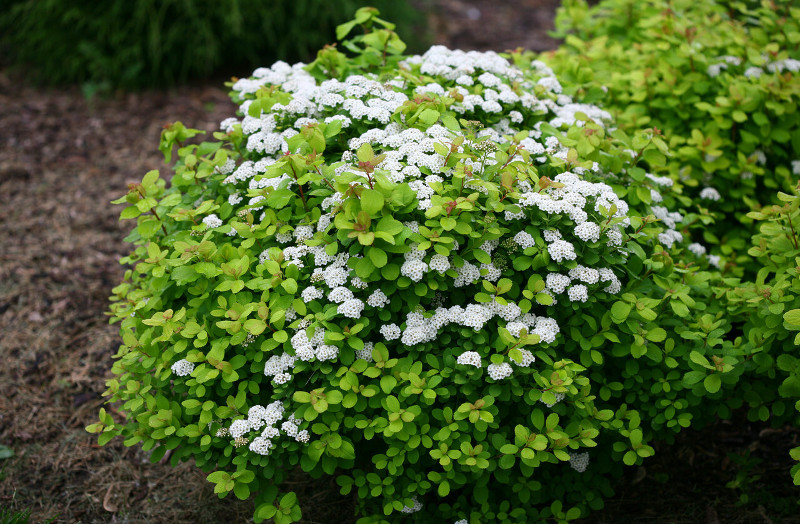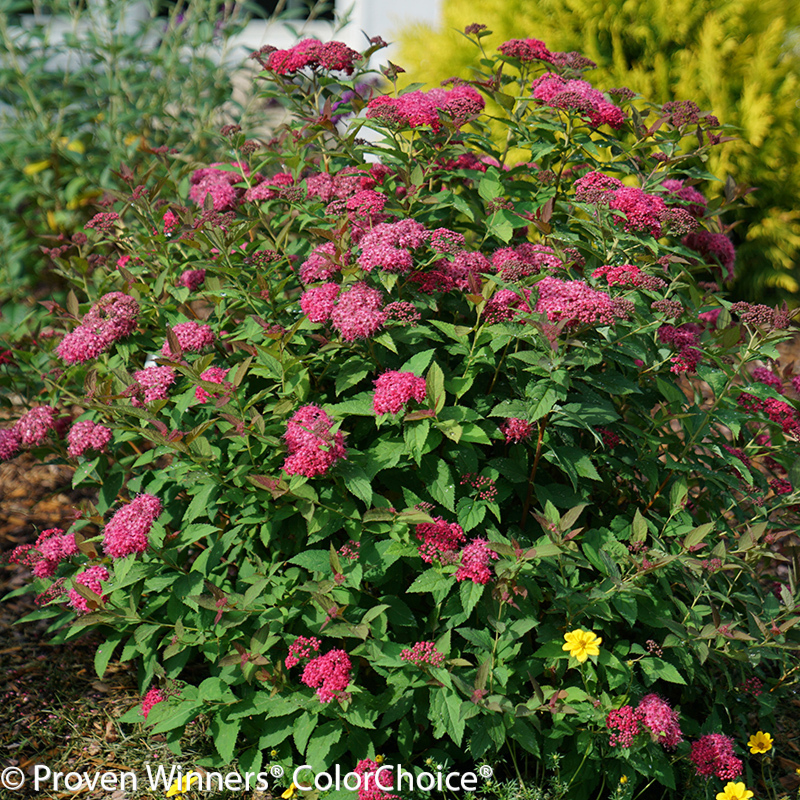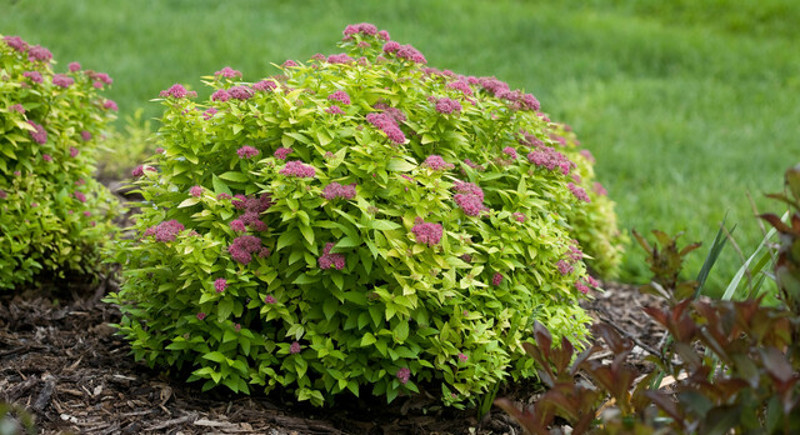Spirea (spiraea) is a genus with around 80 to 100 species in the family Rosacea and is native to North America and Asia. This deciduous shrub offers spring blooming as well as summer blooming varieties of Spirea. Gardeners choose Spirea shrubs for their beauty, hardiness, ease of care, and fast growth rate. For healthy growth, established Spirea shrubs typically need a yearly application of fertilizer. Newly planted shrubs will not require feeding.

How to Fertilize Spirea
Spirea are not picky about the soil it grows in, as long as it is well draining. A neutral to slightly acidic soil (pH 6 to 7) is great. This shrub does not require a lot of feeding, so a yearly application of an all purpose fertilizer is all the plant needs for the entire season. Spirea do not need fertilizing when newly planted. If you choose, you can mix in some compost into the soil. Spirea shrubs are not heavy feeders, so you need to be careful to avoid overfeeding.
Step 1 - Use around a pound of a slow release fertilizer per 100 square feet.
Step 2 - Sprinkle the fertilizer around the root zone.
Step 3 - Avoid getting fertilizer on the foliage. This can burn the plant.
Step 4 - Water well after the application of fertilizer.

Best Time To Fertilize Spirea
Spirea shrubs are not heavy feeders. An established shrub can benefit from a yearly application of fertilizer in the early spring before new growth emerges. A slow release fertilizer will feed your Spirea for the entire growing season.

Best Fertilizer For Spirea
Established Spirea will grow best when a light fertilizer is used. A slow release type will feed your shrub the entire growing season. A balanced granular fertilizer, (10-10-10 or organic fertilizer) is recommended. Be careful of using too much nitrogen. This can result in too much leafy growth and reduce how many blooms are produced.
Spirea Fertilizing Tips
- Use a light fertilizer such as a 10-10-10.
- A granular fertilizer will feed Spirea for the entire season.
- Apply annually in the early spring.
- Avoid over fertilizing.
Warnings
-Always wear protective gloves and a face mask when handling chemical fertilizers.
-Closely follow all directions and storage guidelines that are on the fertilizer label.
 |
Author Chris Link - Published 10-19-2021 |
